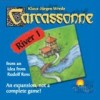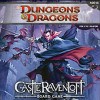profile badges
recent achievements

Check Out My Favorites
Add 5 games to your Favorites list.
Add 5 games to your Favorites list.

My First Favorite!
Add a game to your list of Favorites by clicking the "Favorite" button on a game page.
Add a game to your list of Favorites by clicking the "Favorite" button on a game page.

My First Wish!
Add a game to your Wish List by clicking the "Want It" button on a game page.
Add a game to your Wish List by clicking the "Want It" button on a game page.

Gamer - Level 2
Earn Gamer XP to level up!
Earn Gamer XP to level up!




































Ascending Empires
The tagline from Alien told us that in space no one can hear you scream. Ascending Empires tells us that screaming isn’t the only thing that no one will hear: In space no one will hear you when you try to explain that the spaceship you just flicked into their orbit got there purely by accident. You had no intention on going anywhere near them, and that you didn’t mean to hit that planet that ricocheted your ship right into the heart of their sector of space. Yes, Ascending Empires has reminded me of this cruel fact over and over again, and that any such “accident” will be treated as nothing short of an act of all-out war.
Ascending Empires by Z-Man Games is a 4X space game for 2 to 4 players, complete with exploring new planets, building cities, and researching tech, only it uses flicking for its movement and combat mechanics. Never thought you’d see the day when that combination happened, right? While the dexterity aspect is surely what Ascending Empires will be remembered for, and rightfully so, by no means does it define it. As it turns out the empire building plays just as big of a role in the game, if not bigger. It’s all done in a way that’s light enough to not seem out of place with the fast action of the flicking, and not too light to not offer interesting decisions to be made.
You start a game of Ascending Empires with just your home planet, two space ships, and a handful of troops. On your turn, you take one action, which can be populating your planets with troops, building a research facility, colony, or city, mining for victory points, researching tech, or, of course, flicking your space ships all over the far reaches of space in order to land on new planets and to battle it out with your opponents. Given that you only get to perform one of those actions and that they’re all very simple when you get down the details on how they work, turns should only be around 15-20 seconds. That means pretty much no downtime. Play goes until someone takes the last of the victory point tokens (determined by the number of players), everyone takes one last turn, and an end-game score is added to the VP you earned during the game. The whole thing stays pretty close to the 75 minute playtime printed on the box.
I’m a big fan of games that can present a simple set of rules and then give you a bunch of different, well-balanced ways to break those rules, like Heroscpae or Summoner Wars. Ascending Empires has a bit of that as well in its simple yet effective research tree, which is what really drives the game. There’s four color-coded technology paths to pursue, each one with its own theme. Orange is for combat, grey is for movement, purple for defense, and brown for recruiting troops. These are the four colors that planets come in. Each tech path has four levels that you need to research in order, each level more powerful than those before it. To develop a technology, you need to have a number of research facilities equal to its level on planets of the matching color. If you’re the first player to research that technology, you get victory points equal to its level. That may not sound like much for level 1 or 2 techs, but for 3 or 4, it’s huge. By the time you’re going for the level 3 or 4 techs, you’ll likely have found all the planets in your sector of the board that match the color you’re going for, and probably a few more in other sectors, which means you’ll have to take your opponents’ planets by force. So not only does research give you the opportunity to score the big points, but it will often draw out player interaction as well.
I suppose everyone wants to know more about the flicking and what role it plays aside from getting you to new planets. The flicking in Ascending Empires tends to be less about hitting targets, but rather getting as close as you can without hitting them, especially with ship combat. To destroy an enemy ship you need to get two of your ships within range of it, and each player gets a little cardboard gauge that is used to check if they’re in range. If both ships are in range, the enemy ship is removed and you’re rewarded a VP. But if you hit the ship, you’ve rammed it, both ships are removed and no VP is scored. But going back to how tech drives the game, most of these rules can and will be broken. You can improve your range, move your ships more times per turn, score VP for ramming, and bring out the dreaded battleship, a massive ship that counts as two ships, making short work of any ship that gets within its range.
Components are for the most part pretty good. There’s a ton of wooden bits in the box, and not just your standard wooden cubes. Planets are on thick, sturdy discs, and there’s about 30 of them included. Your standard spaceships are a bit lighter than you’d prefer them to be, and until you get your flicking down, they’ll likely be popping up on their side and rolling around the board. Practice certainly decreases how frequently it happens. The most troubling component of the game is the board, which comes in 9 puzzle parts. These boards warping will kill the game. A zip bag and silica packets are included, but the puzzle pieces themselves don’t always want to fit together as they should. We’ve had a few awkward moments in which a player went to flick their ship and found that somebody (certainly not me) didn’t properly put the board together. Forcing these parts together could result in damaging the boards, which also won’t do your spaceship flicking any good.
Ascending Empires certainly takes two genres that you would think have no business being together, yet fits them seamlessly together. You might think that it might come across as too light or too silly, but to the contrary, it manages to provide a fair amount of strategic punch and comes in at the just the right length. It’s not anywhere near the epic scope of Twilight Imperium, but you’d be hard pressed to find a better civ-building game, sci-fi theme or no, that plays as quick and as well as Ascending Empires does. I’m well over a dozen plays on it, and I can comfortably say that it’s the first strong contender for my 2011 Game of the Year.